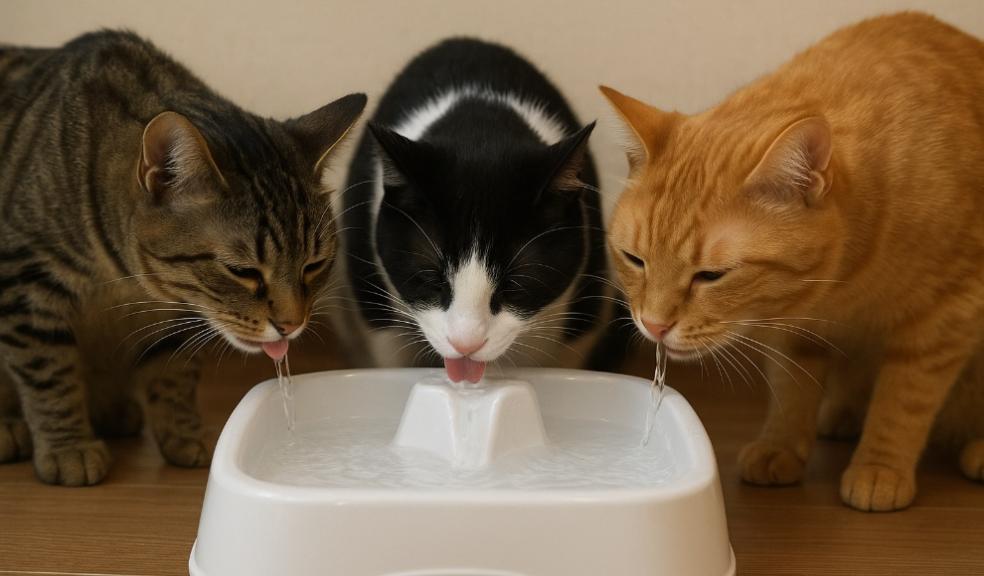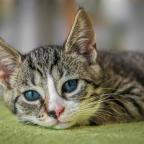
How a Cat Water Fountain Can Reduce Urinary Problems in Cats
Cats are known for being picky drinkers, and many owners struggle to get their feline companions to consume enough water. This issue may seem minor at first, but dehydration in cats is closely linked to urinary problems, including urinary tract infections (UTIs), bladder stones, and even kidney disease.
A simple yet effective way to encourage hydration is by using a Cat Water Fountain. Unlike regular bowls, these fountains provide a steady flow of fresh, circulating water that naturally attracts cats to drink more.
In this article, we will explain how a Cat Water Fountain can play a key role in reducing urinary issues in cats. We’ll also look at the health benefits, what science says about feline hydration, and how to pick the right fountain for your pet.
What is a Cat Water Fountain
A Cat Water Fountain is a special type of drinking bowl designed to keep water moving so it stays fresh and clean. Instead of sitting still like in a regular bowl, the water flows in a gentle stream that attracts cats to drink more. Most fountains come with filters that remove dirt, hair, and bad taste, making the water safer for pets.
Since cats often avoid stale or warm water, the moving flow encourages them to drink more often. This helps support better hydration, which is important for their kidneys and urinary health. A fountain can be especially useful for indoor cats that may not drink enough from a regular bowl.
Why Hydration Matters for Cats
Cats are originally desert animals, which means their bodies are designed to conserve water. While this adaptation worked in the wild, it poses a challenge for indoor cats today. Many felines get most of their moisture from wet food, but if they eat dry kibble, they rely heavily on drinking water to stay hydrated.
Low water intake can lead to concentrated urine, which increases the risk of crystals forming in the bladder. Over time, this can cause urinary tract infections and painful blockages, particularly in male cats. Dehydration can also contribute to kidney stress, making it a serious long-term health issue. Encouraging cats to drink more is one of the most effective ways to prevent these problems.
Why Cats Prefer Flowing Water
Cats have a natural preference for moving water. In the wild, stagnant water sources are more likely to contain bacteria, while running water is fresher and safer. This instinct remains in domestic cats, which explains why many are drawn to faucets or dripping taps.
A Cat Water Fountain mimics this natural preference by keeping water in constant circulation. The gentle sound of flowing water and the sight of movement capture a cat’s attention, encouraging them to drink more frequently. Increased water intake leads to diluted urine, which lowers the risk of crystals, infections, and urinary blockages.
How Cat Water Fountains Help Prevent Urinary Issues
Urinary problems are one of the most common health concerns in cats, often linked to low water intake. Water Fountain encourages more frequent drinking and supports the urinary system in several important ways:
1. Dilutes Urine
When cats drink more water, their urine becomes less concentrated, reducing the likelihood that minerals will form crystals or stones. In well-hydrated cats, crystal formation risk is much lower because sufficient water helps flush out microscopic particles before they clump together.
In cases of feline lower urinary tract disease (FLUTD), about 15-20% of cases are caused by bladder stones (uroliths) arising from crystal accumulation.
By promoting more frequent drinking, a Cat Water Fountain helps maintain a more dilute urine, making crystal formation less likely.
2. Prevents Blockages
Blocked urinary tracts, especially in male cats, are a medical emergency. The incidence of feline urethral obstruction in clinical practice is estimated to range between 1.5% and 9%.
Because male cats have a narrower urethra, they are more vulnerable to blockages when crystals or plugs form. Encouraging steady water intake through a Cat Water Fountain helps reduce the concentration of debris in the bladder, weakening the chance that blockages occur.
Also, recurrence after treatment of a blockage is common, reported in 11% to 43% of cases.
3. Supports Kidney Function
The kidneys act as the body’s natural filter, and hydration is key for flushing out toxins. Chronic kidney disease affects nearly 1 in 3 cats over the age of 10, and dehydration can worsen the condition. By promoting consistent water intake, fountains protect long-term kidney health.
4. Encourages Consistent Drinking
Traditional water bowls tend to stagnate, often discouraging cats from drinking frequently. Flowing water remains more appealing and aerated.
Cats that take small sips multiple times daily maintain more constant urine output, which is healthier for the urinary tract. Because a Cat Water Fountain offers a constant supply of fresh water, it supports this pattern, reducing the period of time that urine sits concentrated in the bladder.
Other Health Benefits of Cat Water Fountains
While preventing urinary issues is one of the most important reasons to invest in a fountain, the benefits extend further:
- Cleaner Water – Many fountains include filters that remove debris, hair, and even some bacteria, ensuring fresher water.
- Better Taste – Circulating water has more oxygen, making it more appealing than stagnant water.
- Encourages Multiple Cats – In multi-pet households, a fountain provides a constant supply of fresh water for all cats, reducing competition.
These small yet meaningful improvements support your cat’s overall wellness and encourage a healthier lifestyle.
Choosing the Right Cat Water Fountain
Not all fountains are the same, and choosing one that matches your cat’s needs will make a big difference. Here are a few factors to consider:
- Material – Stainless steel and ceramic fountains are more hygienic than plastic, which can develop scratches that harbor bacteria.
- Noise Level – Some cats are sensitive to sound, so opt for a quiet pump to avoid scaring them away.
- Capacity – Larger fountains are better for households with multiple cats, while smaller ones work fine for single pets.
- Ease of Cleaning – Look for a design that can be easily disassembled and washed regularly to prevent buildup.
- Filter Quality – A good filtration system will keep water fresh and free from impurities.
Making the right choice increases the chances your cat will use it consistently, maximizing the health benefits.
Training Your Cat to Use a Water Fountain
Some cats may be cautious at first, but most adapt quickly to a fountain. To introduce it:
- Place the fountain near your cat’s usual drinking spot.
- Keep a traditional water bowl nearby until they adjust.
- Encourage curiosity by letting them explore while the fountain is off, then turn it on.
- Reward them with praise or treats when they drink from it.
Within a few days, most cats will prefer the fountain over a still bowl.
Maintenance Tips to Keep the Fountain Safe
A Cat Water Fountain only benefits your pet if it is kept clean. Without proper care, bacteria and algae can develop. Here are some quick maintenance practices:
- Wash the fountain thoroughly at least once a week.
- Replace filters according to the manufacturer’s schedule.
- Keep the water level above the pump to avoid damage and maintain flow.
- Use fresh, filtered water for the best results.
These simple habits ensure your cat always has access to clean, safe water.
Practical Benefits for Cat Health
Many veterinarians recommend fountains for cats prone to urinary issues. Owners often report noticeable improvements when switching from bowls to fountains. Cats drink more frequently, urine tests show lower concentration, and the number of vet visits related to UTIs decreases.
For pet owners looking for a reliable option, the PetCareShed Cat Water Fountain is designed with durability, easy cleaning, and quiet operation in mind. It’s a practical solution for keeping cats hydrated and supporting urinary health in the long run.
Final Thoughts
Urinary problems are a common concern for many cats, but they can often be reduced by encouraging proper hydration. A Cat Water Fountain provides fresh, moving water that naturally attracts cats to drink more often. This helps lower the risk of urinary infections, bladder stones, and kidney disease. By giving your cat access to clean, circulating water every day, you support their overall health and comfort for the long term.







